#Nibiru Here
Explore tagged Tumblr posts
Text
NIBIRU HERE!!!
IMMORTAL U.S. MILITARY KING SOLOMON-MICHAEL HARRELL, JR.™

ommmmm

1968 him [michael] applied psychology [map] of nature's supernatural occult psychic sciences
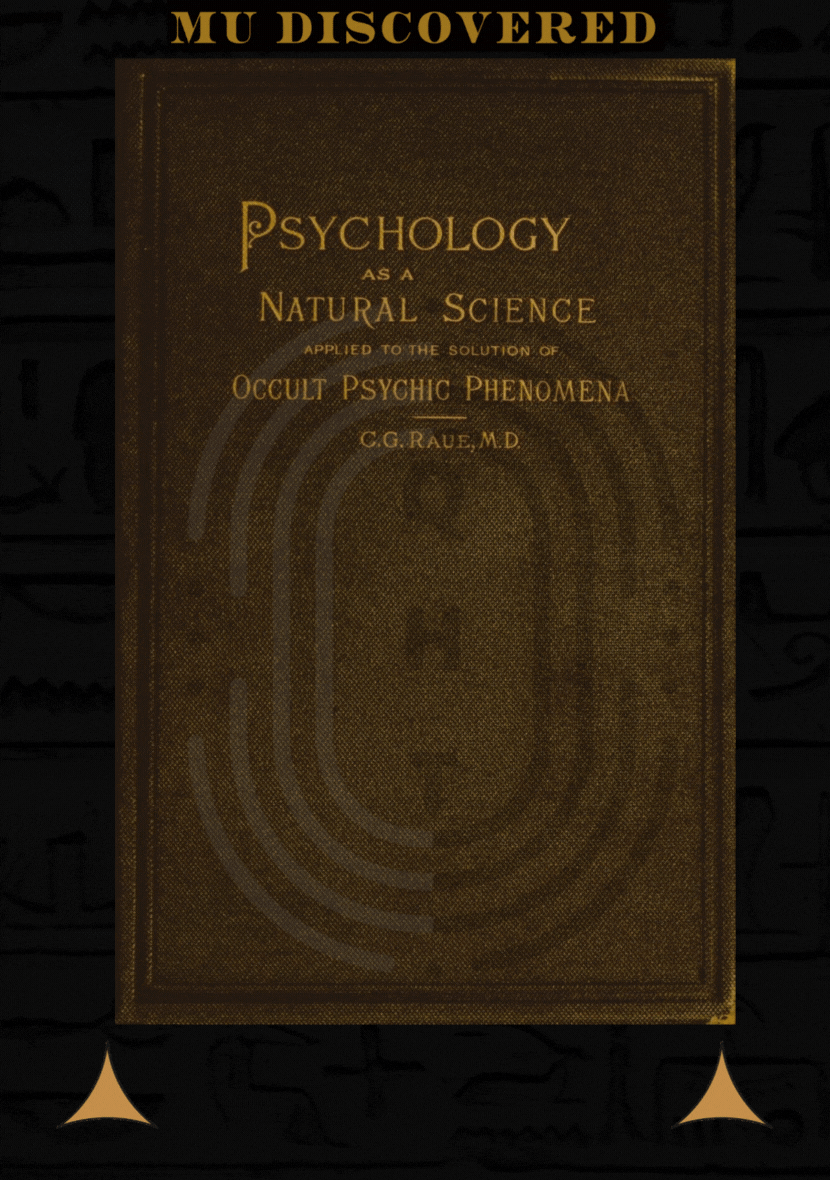
buckle up!!!
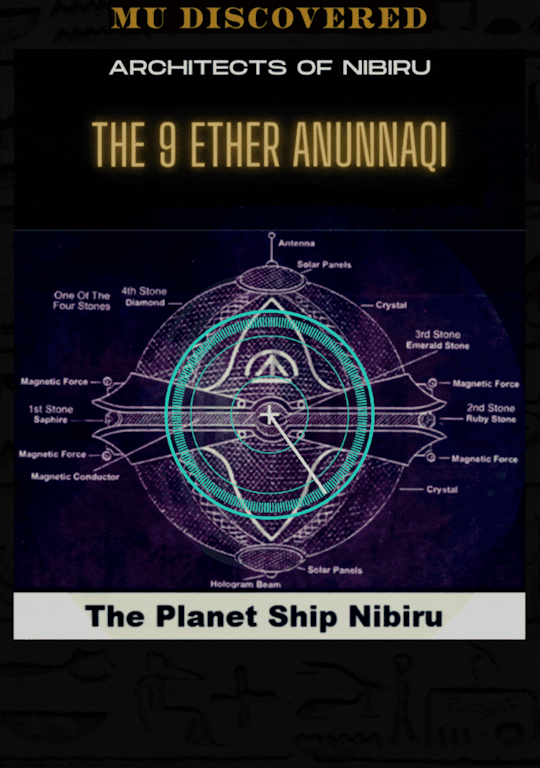
him [michael] on murduk's intergalactic [mi = michael] 9 ether mothership planet ship nibiru
#om#o michael#quantumharrelltech#harrelltut#nibiru here#9 ether psychic sciences#2023#2024#2025#1968
3 notes
·
View notes
Text
on the one hand i'm like, i know there are some pretty obvious reasons Powerful Cosmic Big Good Beings(tm) in fiction tend to in fact be some of the worst bastards in a series, and my sentiment toward them ends up being I'm Going to Fucking Fight You Actually.
namely: they usually have enough power to do some absolutely horrific stuff--through action, inaction, or both--on a massive scale. like full-on 'pokemon villain you have to stop from causing the apocalypse at the climax of the game, because they've decided they have the right to make that call and have gotten their hands on the means to do it.' and often the call that the Big Good makes is portrayed as the right, justified, well-informed thing, which inevitably ends up revealing some pretty disturbing beliefs on the part of the creators.
often they mean well and just haven't thought it through, but a lot of people are operating on some real pokemon villain shit that they haven't questioned yet because it hasn't come up in a context extreme enough to follow to its logical conclusion. 'if you could press a button to kill every trauma survivor in the world to end their suffering, would you?' is not a situation most people will ever be in, and put in those terms they might realize how monstrous that would be and say no. but they might have the philosophy in the back of their head somewhere, influencing their beliefs and interactions with the world, that survivors would be better off dead than traumatized but alive, and that someone else could ever have the right to make that decision for them.
speaking of which. a major reason i have mixed feelings about the ending of sdmi is that the new 'happy' timeline is portrayed with a deep, creeping sense of loss and unease, which seems intentional; otherwise it would just be incredibly upsetting and i would straight up hate it with a passion. whereas i am REALLY bothered by the fact that the nova entity is treated as a kind, benevolent guiding force to lead the heroes where they need to go, and not the single most evil motherfucker in the show surpassed only by the nibiru entity.
she directly, intentionally orchestrated the genocide of an entire timeline, up to and including literally erasing them from existence. she manipulated a bunch of children into doing this without telling them what would happen. the gang are the sole survivors of the murder of every single person they ever knew, and they will have to live the rest of their lives knowing the nova entity used their hands to do it. the only real way she was 'better' than the nibiru entity here was that she decided to cleanse the world with fire so she could make some new people to be happy, instead of ending the possibility for happy people to exist ever again.
like. the nova entity would actually make a fantastic villain played as a foil to the nibiru entity. god damn.
eldritch cosmic Big Good characters are usually treated as some kind of, like, force of nature that arbitrates what the ideal world would look like, and maybe just needs some help from the heroes to make it happen. at worst, they're treated as being too eldritch and above the understanding of mortals, mutual or otherwise, to be held accountable for the decisions that they make. at worst in that case, the heroes are frustrated with them for not being much help, but then things just move along and that stops being considered a Relevant Issue to Address. maybe, maybe the results of those actions are treated as a bad thing, but the person actually responsible gets off squeaky clean.
the consequences of the noventity ending the world are unnerving and bittersweet at best, and the uncomfortable question is left in the air of whether the gang might have done things differently knowing this would be the outcome. the noventity herself is a benevolent hero who saved them all in the end.
and like. that's not how it works. if you're a person making decisions, you are a person making decisions. you are accountable for those decisions. there are a lot of really, really interesting stories to be told exploring the nature of that dynamic with '''higher''' beings who really are working on a different scale than us--with maybe a genuinely deeper understanding of a lot that's going on in the world, just from time, experience, and capacity to hold and process information--and still don't get to decide what's best for us.
i am both fascinated by the potential for stories like that and really frustrated by the way they're handled in fiction, and the way that plays out tends to treat them as Not Actually People and therefore Not Actually Characters, which means it's easy for them and the bullshit they do to blend into the narrative unless you deliberately stop and turn the spotlight on them. so i do.
on the other hand, it is really funny to me that in practice this means my response to Big Good Entity characters is consistently just

#sdmi#scooby doo: mystery incorporated#sdmi nibiru entity#sdmi nova entity#genocide cw#anti survivor cw#SDMItag#on the flipside i also really enjoy taking characters who are supposed to be Mindless Eldritch Single-Minded Incarnations of Pure Evil#and being like no i think you are a Rancid Guy (gender neutral) using that as a cover for being Rancid#what's up with that. bring me my microscope#but this post is long enough already so that's for another time#long post#SDMIcrit tag#also including#LL tag#LL entity#LL crit tag#because it is very much relevant to that too#me hauling the lorien entity and the nova entity by the ear: GET BACK HERE
15 notes
·
View notes
Text
The influx of sdmi content in the Scooby tag is giving me thoughts specifically on Velma post nibiru and ughhhh
#scooby doo#sdmi#cuz like here’s the thing#velma honestly imo had the most to lose from the timeline reset#Everyone else already had extremely disturbed family lives#maybe Scooby didn’t? but#we know scrappy exists and either he did something bad or something bad happened to him in sdmi so#like#I digress tho#velma and her mom had just started bonding again#and ofc her and Marcie were getting extremely close#and don’t get me wrong#I LOVE that velmarcie post nibiru is confirmed#love it#but it brings up a bit of discomfort in my mind ngl#like yeah I’m sure Velma’s happy to see they’re together#but this isn’t her world#that isn’t HER Marcie#anyways 💅#scooby doo mystery incorporated
28 notes
·
View notes
Text
Made Marion Development Update, August 2024

Official Will Route Release Window
I've checked in with the team and we aren't quite ready to release Will's route in (what remains of) the summer, but we're far enough that I have team buy-in on an official release window of the first half of October.
I'll have a more specific date once we begin our beta test in September, which usually lasts two weeks. I may release the first three chapters early for testers while I finish coding the chapters 4.
Will Chapter 3 will be fully written within a week from now. It turned out to be quite a beast. That means that Will's chapter 4s may be a bit shorter each than Robin's were, however, they will also be more different from each other than Robin's were. In fact, the love scenes and the climactic Chapter 4 action scenes are in completely different locations.

I'm going half-tilt on coding while I finish the script, and should have Chapter 1 fully coded soon, as well.
World Name Thoughts
Although the world in which Made Marion is set has three named countries: Avalon, Sunjata, and Nibiru, the world as a whole does not yet have a name.
I probably won't give it an in-universe name because its inhabitants primarily identify with their country of birth and don't really have a view of themselves as being on a planet in a system full of other planets. But still, since I'm planning to create multiple tales in this world (one for each country), I could use a name to call it for marketing purposes.
I've been putting this off for a while, but I'd like something with a historical/folkloric connection that deals with the number three OR that has something to say about the kingdom's themes - Sunjata, the Sun Lands; Avalon, the Middle Kingdom (light and shadow); and Nibiru, the Twilight Realm.
Right now I'm thinking perhaps "Triskelion," named after the Celtic triple spiral pattern. But I'm not 100% satisfied with that since I have two other countries that do not have Celtic inspiration (Sunjata is inspired by Medieval North and West Africa, while Nibiru is very loosely inspired by Ancient Babylon and the Indus Valley Civilization). It's probably not a big deal since it'd be difficult to encompass all three and this entire world began with my desire to thread Celtic elements into the Robin Hood tales, but still. Any thoughts or ideas?
Here's a reward for everyone who made it to the end. Arrapso didn't make those shirtless combat sprites for nothing!
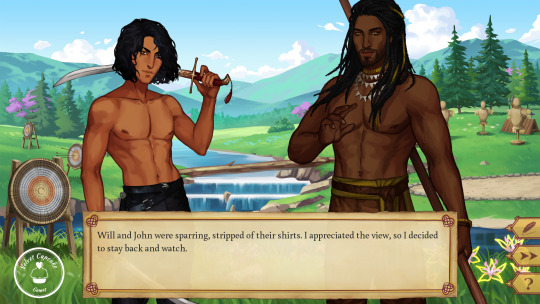
42 notes
·
View notes
Text
Nibiru Spreadsheets

Nibiru is a sci-fi-fantasy game about lost memories and a space station habitat large enough to carry vast territories. You play as amnesiacs trying to recovery your memories, while wrestling with your fragmented pasts and trying to figure out why you are where you are in the first place.
I've created some spreadsheet play-kits to make online play a little bit easier. It has a safety tools tab, a character sheet that you can duplicate for every player involved, and a few rules references to make play a little bit easier.
You can check out the game here. You can also create a copy of this character sheet for yourself here.
If you want to see the folder of Google playkits that I've made for various games, you can click the link below.
Clicky.
28 notes
·
View notes
Text
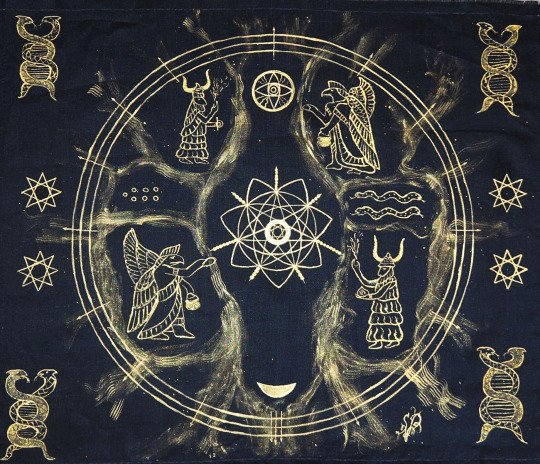
Anunnaki of Nibiru.
The Book of Possibilities is the Anunnaki Book of Wisdom. It’s filled with positive, hopeful, and empowering aphorisms and proverbs. As you learn in Anunnaki Awakening: Revelation, the Anunnaki have as difficult a time as we humans living up to their ideals.
Here are 13 quotes from this timeless store of wisdom.
1. Birth is a given. Death is a given. Everything in between is a choice.
2. Your mind is a vacuum. Either you fill it with thoughts of your choosing, or someone else will.
3. Your heart is mighty. Your mind is limitless. Your soul is infinite.
4. When we fail to seek out our dreams, our regrets hunt us down.
5. Every moment has within it the power to change every moment that came before it.
6. You may not be the center of the Universe, but you ARE one of its bright shining stars!
7. We can be victims of our past or builders of our future, but we cannot be both at once.
8. Limiting what you can know to what you can see, blinds you.
9. Love is more than a hypothesis.
10.A river has hope because it never stops moving forward.
11. Nothing will keep you from knowing more surely than what you think you know.
12. To emancipate yourself, emancipate your mind. To emancipate your mind, emancipate your heart.
13. Stop! Are you counting your possibilities or your obstacles?
Keep seeking!
62 notes
·
View notes
Text

( layout ib : @/s3aborn3 )
⠀⠀⠀⠀⠀ ☀︎ ᜔ ࣪ . . . MEET THE MEMBERS OF NIBIRU !
Are you a new X CYPHER who wants to learn the NIBIRU members? Are you trying to pick a bias? Well, you're in luck! Here is where you can learn about our bubbly space boys!

⸻ ✰ʾ BASICS !
BIRTH NAME :: Yang Hoseok
BIRTH DATE :: March 22nd, 1999
BIRTH PLACE :: Seoul, South Korea
HOMETOWN :: Seoul, South Korea
ETHNICITY :: Korean
NATIONALITY :: Korean
LANGUAGES :: Korean (native), English (advanced)
⸻ ✰ʾ CAREER !
STAGE NAME :: Sirius
REPRESENTATIVE PLANET :: Mars
CAREER :: Idol
COMPANY :: STARBORN CREATIVE
TRAINING TIME :: Four years
POSITION :: Lead Vocalist, Face of the Group
⸻ ✰ʾ SOCIALS !
INSTAGRAM :: yang.hoseok
EMOJI :: ☀

⸻ ✰ʾ BASICS !
BIRTH DATE :: September 17th, 1999
BIRTH NAME :: Yoon Serim
ENGLISH NAME :: Marco Yoon
BIRTH PLACE :: Anyang, Gyeonggi, South Korea
HOMETOWN :: Anyang, Gyeonggi, South Korea
ETHNICITY :: Korean
NATIONALITY :: Korean
LANGUAGES :: Korean (native), English (conversational)
⸻ ✰ʾ CAREER !
STAGE NAME :: Raiden
REPRESENTATIVE PLANET :: Saturn
CAREER :: Idol
COMPANY :: STARBORN CREATIVE
TRAINING TIME :: Two years
POSITION :: Main Rapper
⸻ ✰ʾ SOCIALS !
INSTAGRAM :: marco.o_s_yo.on
EMOJI :: 🌞

⸻ ✰ʾ BASICS !
BIRTH NAME :: Li��m Hung Khuong
KOREAN NAME :: Lim Taewoo
BIRTH DATE :: November 8th, 1999
BIRTH PLACE :: Việt Trì, Phú Thọ, Vietnam
HOMETOWN :: Việt Trì, Phú Thọ, Vietnam
ETHNICITY :: Vietnamese
NATIONALITY :: Vietnamese
LANGUAGES :: Vietnamese (native), Korean (conversational)
⸻ ✰ʾ CAREER !
STAGE NAME :: Taewoo
REPRESENTATIVE PLANET :: Jupiter
CAREER :: Idol
COMPANY :: STARBORN CREATIVE
TRAINING TIME :: Two years
POSITION :: Main Dancer, Lead Vocalist
⸻ ✰ʾ SOCIALS !
INSTAGRAM :: instae_uwu
EMOJI :: 🦦

⸻ ✰ʾ BASICS !
BIRTH NAME :: Phraisong Adulyadej
BIRTH DATE :: February 4th, 2000
BIRTH PLACE :: Chiang Mai, Thailand
HOMETOWN :: Chiang Mai, Thailand
ETHNICITY :: Thai
NATIONALITY :: Thai
LANGUAGES :: Thai (native), Korean (conversational), English (practicing)
⸻ ✰ʾ CAREER !
STAGE NAME :: Saint
REPRESENTATIVE PLANET :: Mercury
CAREER :: Idol
COMPANY :: STARBORN CREATIVE
TRAINING TIME :: Three years
POSITION :: Lead Rapper, Lead Dancer
⸻ ✰ʾ SOCIALS !
INSTAGRAM :: ssaint_phraisong
EMOJI :: 🐺

⸻ ✰ʾ BASICS !
BIRTH NAME :: Park Jinhwan
BIRTH DATE :: May 24th, 2000
BIRTH PLACE :: Gokseong, South Jeolla, South Korea
HOMETOWN :: Gokseong, South Jeolla, South Korea
ETHNICITY :: Korean
NATIONALITY :: Korean
LANGUAGES :: Korean (native), English (advanced)
⸻ ✰ʾ CAREER !
STAGE NAME :: CODA
REPRESENTATIVE PLANET :: Venus
CAREER :: Idol
COMPANY :: STARBORN CREATIVE
TRAINING TIME :: Five years
POSITION :: Main Dancer, Lead Rapper, Composer
⸻ ✰ʾ SOCIALS !
INSTAGRAM :: starbcysss
EMOJI :: 🦚

⸻ ✰ʾ BASICS !
BIRTH NAME :: Santiago Montoya-Hwang
BIRTH DATE :: February 3rd, 2001
BIRTH PLACE :: Seoul, South Korea
HOMETOWN :: Cancún, Quintana Roo, Mexico
ETHNICITY :: Korean
NATIONALITY :: Korean-Mexican
LANGUAGES :: Spanish (native), Korean (fluent)
⸻ ✰ʾ CAREER !
STAGE NAME :: Atlas
REPRESENTATIVE PLANET :: Ceres
CAREER :: Idol
COMPANY :: STARBORN CREATIVE
TRAINING TIME :: Three years
POSITION :: Main Rapper, Vocalist, Composer
⸻ ✰ʾ SOCIALS !
INSTAGRAM :: atlasanti_
EMOJI :: 💫

⸻ ✰ʾ BASICS !
BIRTH NAME :: Shin Yohan
BIRTH DATE :: February 10th, 2001
BIRTH PLACE :: Seoul, South Korea
HOMETOWN :: Seoul, South Korea
ETHNICITY :: Korean
NATIONALITY :: Korean
LANGUAGES :: Korean (native), English (practicing)
⸻ ✰ʾ CAREER !
STAGE NAME :: Yohan
REPRESENTATIVE PLANET :: Uranus
CAREER :: Idol
COMPANY :: STARBORN CREATIVE
TRAINING TIME :: One year
POSITION :: Lead Vocalist, Visual
⸻ ✰ʾ SOCIALS !
INSTAGRAM :: yohannie_ss
EMOJI :: 🐼

⸻ ✰ʾ BASICS !
BIRTH NAME :: Jung Woojin
BIRTH DATE :: May 24th, 2001
BIRTH PLACE :: Seoul, South Korea
HOMETOWN :: Seoul, South Korea
ETHNICITY :: Korean
NATIONALITY :: Korean
LANGUAGES :: Korean (native), English (advanced)
⸻ ✰ʾ CAREER !
STAGE NAME :: Woojin
REPRESENTATIVE PLANET :: Neptune
CAREER :: Idol
COMPANY :: STARBORN CREATIVE
TRAINING TIME :: One year
POSITION :: Lead Rapper, Lead Dancer
⸻ ✰ʾ SOCIALS !
INSTAGRAM :: uwu__jin
EMOJI :: 🐶

⸻ ✰ʾ BASICS !
BIRTH NAME :: Jonah Kim
BIRTH DATE :: September 12th, 2001
BIRTH PLACE :: San Francisco, California, USA
HOMETOWN :: San Francisco, California, USA
ETHNICITY :: Korean
NATIONALITY :: Korean-American
LANGUAGES :: English (native), Korean (native), Japanese (conversational)
⸻ ✰ʾ CAREER !
STAGE NAME :: Jojo
REPRESENTATIVE PLANET :: Pluto
CAREER :: Idol
COMPANY :: STARBORN CREATIVE
TRAINING TIME :: Four years
POSITION :: Maknae, Lead Vocalist
⸻ ✰ʾ SOCIALS !
INSTAGRAM :: jojo.nahhh
EMOJI :: ⚡
# ✰ [ 𝐂𝐎𝐃𝐄: 𝐏𝐋𝐀𝐍𝐄𝐓 𝐗 ] : profile #idol!au#idol!oc#idol!addition#oc!kpop#oc!group#oc!soloist#oc!idol#kpop oc#oc kpop#oc kpop idol#kpop oc idol#oc kpop group#fictional idol community#fictional idol oc#fictional idol group#idolverse
12 notes
·
View notes
Text
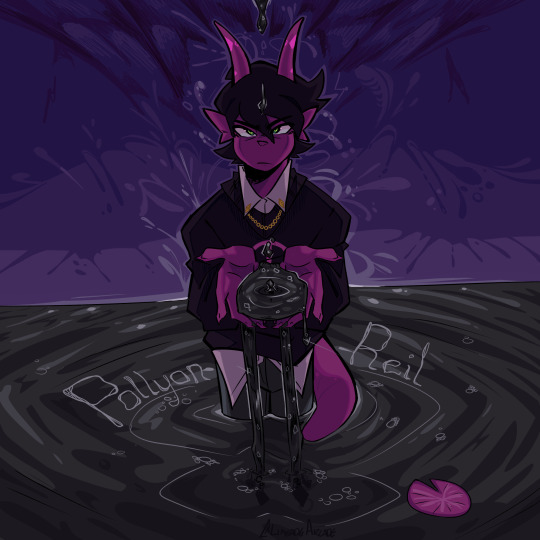
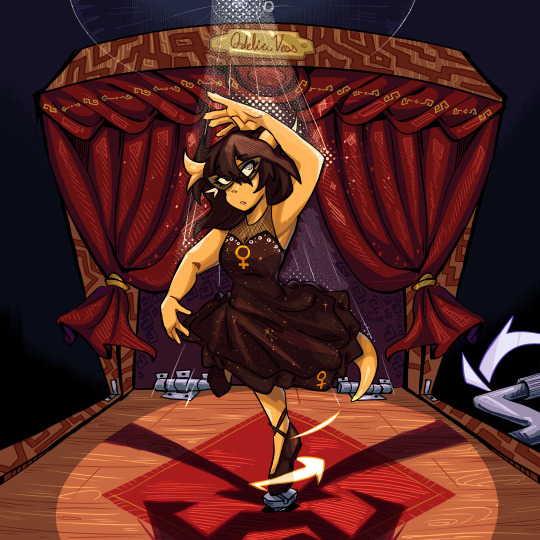


Hey! Desynced recently debuted the 'Nibiru' Album! I got to make 4 track arts for it and you can check it out here:
youtube
42 notes
·
View notes
Text
I’m just gonna say it here but
the fact that Fred is still named Fred in the post nibiru timeline shows that Jones didn’t named the baby after himself, but that Brad and Judy named him after Jones.
and that still works in the post nibiru timeline since Jones is a coach in the school that the og mystery inc members were probably attending as teenagers.
that man had such an impact in theirs and Fred’s life that the freaking timeline reset didn’t change the fact that they both share the same name,,
#scooby doo#scooby doo mystery incorporated#sdmi#brad chiles#judy reeves#fred jones#fred jones sr#I WANT JONES AS FRED’S GODFATHER IN THE NEW TIMELINE#it’s probably the sleep deprivation#I hadn’t had a normal night in too long#I talk too much#they make me so sad
59 notes
·
View notes
Text
{🌑✨👩🏿👧🏽👩🏾🦱👵🏽🧕🏽🗺💭🌬/🍥🌎🧌🦎👣👣🌀}
The Great awakening is the new reset of the world no more Draconians controlling governments, no more poised foods, no more fake media and satanic cults, no more religions no more matrix illusions and paper money that has no value the fifth density is shifting so let go of your ego’s and raise your consciousness, because karma is coming for mother Ta - meri natural disaster’s will start cleansing her soil as the black sun give us neuromelalinated beings our full twelve dna strains back nibiru and the Ancestors are here to make New changes.
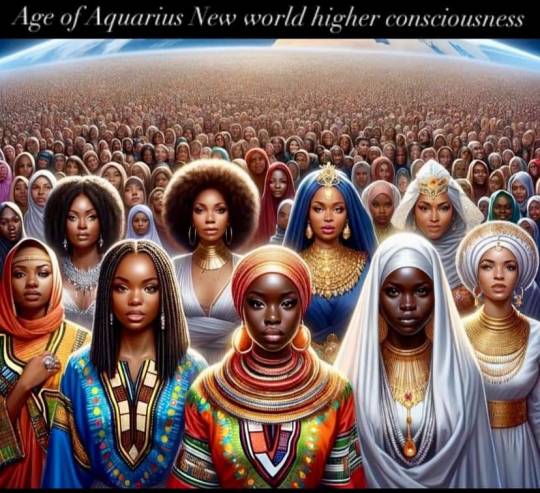
26 notes
·
View notes
Text
NIBIRU HERE!!!
WELCOME BACK HOME IMMORTAL [HIM] U.S. MILITARY KING SOLOMON-MICHAEL HARRELL, JR.™

i.b.monk [ibm] mode [i’m] tech [IT] steelecartel.com @ quantum harrell tech llc

eye anu golden 9ethernibiru.tech INVASION!!!

eye anu golden 9ethernibiru.tech INVASION!!!
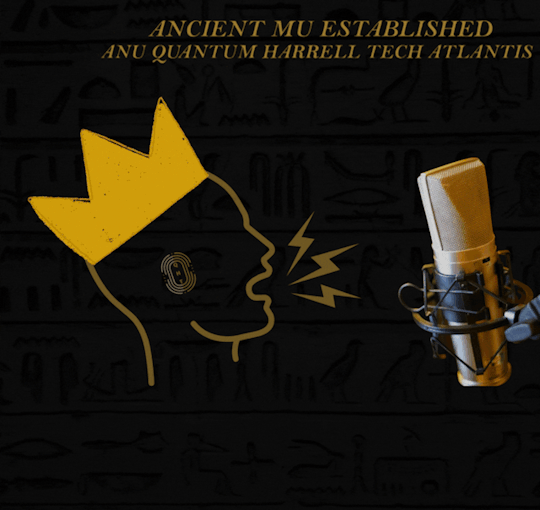
they say eye anu [sea] golden 9ethernibiru.tech INVASION!!!
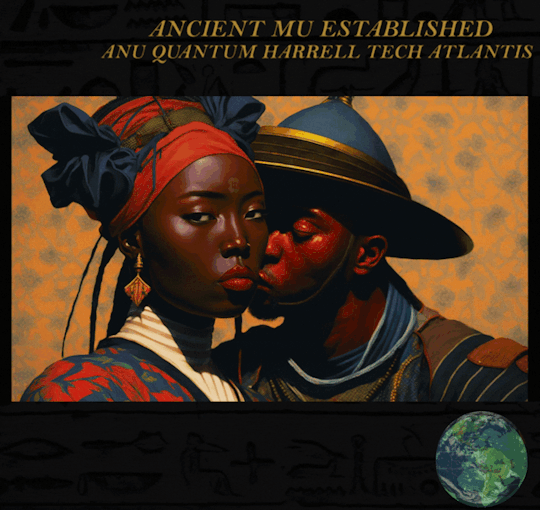
eye anu golden 9ethernibiru.tech INVASION!!!

they say eye anu [sea] golden 9ethernibiru.tech INVASION!!!
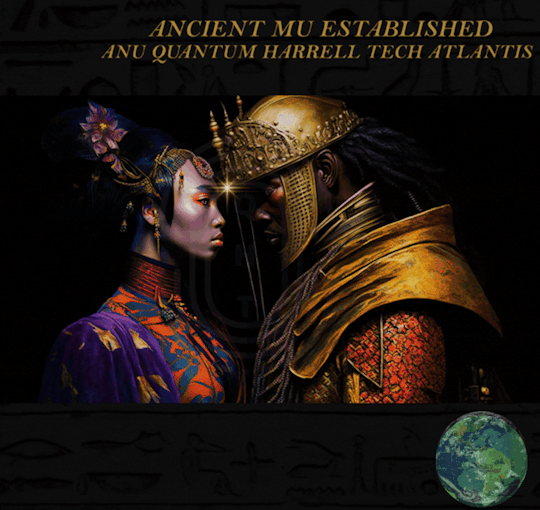
144,000 NIBIRUANS HERE!!!

NIBIRU BEEN HERE!!!
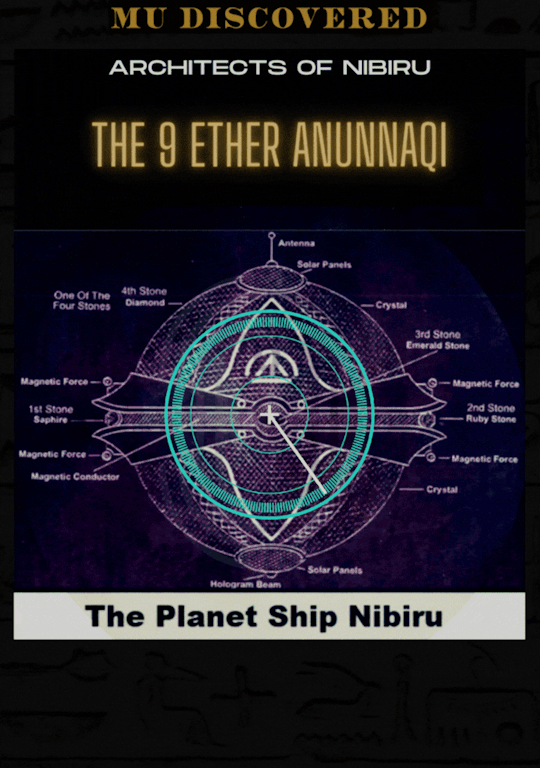
© 1968-2223 QUANTUM HARRELL TECH LLC All 9ETHERNIBIRUDotTech DNA Domain Rights Reserved.
#we extra futuristic#quantumharrelltech#quantumharrelltut#om#o michael#mu:13#harrelltut#kemet#u.s. michael harrell#king tut#harrelltut.com#nibiru here
1 note
·
View note
Text
The Myth of the Annunaki

In the great annals of human history, ha, anal, mostly made up of fiction, few subjects stir the imagination and ad to the aluminum foil shortage as profoundly as the Annunaki. Shrouded in myth and enigma, these ancient deities from Mesopotamian lore have sparked debates, inspired theories, created fiction, and captivated minds across the centuries. From their origins in the fertile crescent of ancient Sumer to their role in modern speculative fiction, the Annunaki embody a rich tapestry of myth, history, and imagination. This exploration delves into their ancient roots, their controversial modern reinterpretations, the fascination evoked by our imagination, and our ability to want things to be real so bad, that we’ll just take as many liberties as possible; even if all the evidence and logic say a thing like this couldn’t be real. Or could it?
The Ancient Mesopotamian Origins of the Annunaki
Our journey begins in the cradle of civilization: ancient Mesopotamia, a region that flourished between the Tigris and Euphrates rivers. Here, the Annunaki first appeared in the mythologies of the Sumerians, who are considered the earliest civilization that could write. The term "Annunaki" itself is often translated as “those who came from the heavens” or “those of royal blood.” This intriguing terminology hints at their elevated status and their perceived connection to the divine or extraterrestrial. In Sumerian mythology, the Annunaki were a pantheon of deities, or the gods of a people, who played crucial roles in the creation of our world and the regulation of its life. They were seen as powerful and unpredictable beings, with the ability to both bestow blessings and wreak havoc upon humanity. The mythological texts from this period reveal that the Annunaki were not abstract concepts but tangible entities with distinct personalities and roles. One of the key sources for understanding the Annunaki is the “Enuma Elish,” the Sumerian creation epic. This ancient narrative describes the primordial chaos from which the world emerged. This myth reflects the Sumerians' worldview, where divine power maintained the balance between chaos and order. The Annunaki's role in Sumerian society extended beyond mere mythology. They were believed to oversee the natural world and human affairs, acting as intermediaries between the gods and the people. Their stories served to justify the divine authority of kings and priests, reinforcing the idea that the rulers were chosen by the gods to maintain cosmic balance from the chaos. This divine connection legitimized the socio-political structures of ancient Mesopotamian civilization.
The Annunaki Reimagined: From Gods to Aliens
In the 20th century, the Annunaki transitioned from divine beings of ancient myth to subjects of modern speculation and conspiracy theories. This transformation was spearheaded by figures like Zecharia Sitchin, whose works have left a permanent mark on how we perceive these ancient myths. Sitchin’s ideas are detailed in his book “The 12th Planet,” where he presents the Annunaki as extraterrestrial visitors from a distant planet named Nibiru. Sitchin’s hypothesis posits that the Annunaki arrived on Earth approximately 450,000 years ago (447,976 BCE). According to his theories, their primary mission was to mine gold, which they needed to repair the failing atmosphere of their home planet, Nibiru. There is some scientific data out there that gold particles can help build up a planet’s atmosphere. There are some intriguing parallels in scientific discussions about the potential uses of gold in atmospheric engineering. Gold is a highly reflective metal with excellent conductive properties, making it suitable for various technological applications. Some we know of and use while others are still in the planning stages. Research has suggested that dispersing gold nanoparticles in the upper atmosphere could theoretically increase a planet's reflectivity, or albedo, thereby reducing the amount of solar energy absorbed and mitigating global warming. Additionally, gold's conductive properties might enhance the electrical conductivity of the ionosphere, potentially stabilizing atmospheric conditions and protecting against solar radiation. While Sitchin's narrative lacks actual real concrete proof, the concept of using gold to address planetary environmental challenges taps into ongoing scientific exploration of innovative geoengineering solutions. Sitchin’s interpretation of ancient texts suggests that the Annunaki’s arrival marked the beginning of human civilization. He argues that these beings not only influenced early human societies but also engineered Homo sapiens through genetic manipulation. This theory, while compelling to many, is highly contentious. Sitchin’s methods and interpretations have faced substantial criticism from the academic community. It's important to note that Zecharia Sitchin lacked formal training in ancient languages and archaeology. His educational background was in economics and journalism, not in the fields relevant to his claims about Sumerian texts and ancient history. This lack of formal expertise has led many academics to criticize his translations and interpretations as speculative and unsubstantiated. His methodology and conclusions have been scrutinized for deviating from established scholarly standards, which is why his work is often labeled as pseudoscience. Pseudoscience literally means science with made-up methodologies and made-up facts. Archaeologists and historians argue that there is no credible evidence supporting the existence of Nibiru or the extraterrestrial origins of the Annunaki. His translations of Sumerian texts are flawed and his theories often stretch the evidence beyond credible limits. Despite this, Sitchin’s ideas have captivated a broad audience, fostering a popular narrative that blends ancient mythology with science fiction. His theories have become a cornerstone of the ancient astronaut hypothesis, which suggests that extraterrestrial beings visited Earth in ancient times and influenced human development. This concept resonates with our fascination with the possibility of life beyond Earth and our desire to explore the unknown or at the very least have an answer where one cannot possibly exist or be factual.
Sitchin’s Controversial Claims: Ancient Astronauts or Misinterpreted Texts?
Sitchin’s theories, particularly those presented in “The 12th Planet,” offer a provocative reimagining of the Annunaki. Sitchin suggests that Nibiru, the Annunaki’s home planet, follows a long, elliptical orbit that brings it close to Earth every 3,600 years. This periodic return, according to Sitchin, allowed the Annunaki to visit Earth and influence human civilization. Sitchin’s narrative begins with the Annunaki’s arrival on Earth, where they established the city of Eridu as their base of operations. Eridu, according to Sitchin, was the first city ever built by these ancient astronauts, serving as a center for their gold mining operations. Over time, the work on Earth became increasingly burdensome and dangerous for the Anunnaki, leading to a significant labor shortage. The Anunnaki’s own workers, who were initially tasked with these duties, were becoming overworked and dissatisfied. We will talk about the Igigi a little bit later. The idea was to create a new species that could handle the manual labor on Earth while the Anunnaki themselves could focus on more critical tasks or return to Nibiru. This led to the concept of bioengineering a creature that would serve as a workforce. The Anunnaki began experimenting with the DNA of the indigenous hominid species, Homo erectus. Through advanced genetic techniques, they combined their own DNA with that of Homo erectus to create a new hybrid species. This genetic manipulation was intended to produce beings with intelligence and physical capabilities suitable for labor. The first attempts at creating this new species were, according to Sitchin, less successful than anticipated. These early hybrids were described as "hideous creatures," struggling to meet the Anunnaki’s requirements for both labor and functionality. These early beings were likely flawed, either in their physical form or in their ability to perform the tasks required of them. Undeterred by their initial failures, the Anunnaki refined their genetic experiments. After several iterations and adjustments, they succeeded in creating a more viable and efficient version of their hybrid creation: Homo sapiens, the modern human. These beings possessed the intelligence, strength, and adaptability necessary for the laborious tasks demanded by the Anunnaki. Once successful, the Anunnaki established Homo sapiens as their labor force, overseeing them and guiding their development. This new species was tasked with performing the menial and physically demanding work that the Anunnaki had initially sought to avoid.
While there are some intriguing gaps and mysteries in human evolution, like missing fossils and sudden advancements in early cultures, scientists believe these are just natural parts of a long, gradual process rather than evidence of any external intervention. One fascinating example is the emergence of our 23rd chromosome, which resulted from the fusion of two ancestral chromosomes that our primate relatives still have as separate chromosomes. This fusion is visible in our DNA through the presence of telomere sequences and a vestigial centromere in the middle of chromosome 2, showing a natural evolutionary change rather than a direct “kick-start” from another species. However, it does bring up more questions than it does answers that all of a sudden this change occurred with no rhyme or reason. “Any sufficiently advanced technology is indistinguishable from magic” - Arthur C. Clarke. Sitchin’s theories also include a dramatic account of the great flood from the bible, which he attributes to the gravitational effects of Nibiru’s orbit. This flood, he argues, was foreseen by the Annunaki, who warned a human named Ziusudra (or Utnapishtim in the Epic of Gilgamesh and/or Noah from the Great Flood of the Bible.) to build a boat to survive the deluge. After the flood, Sitchin posits that the Annunaki played a role in the rebirth of human civilization, teaching essential skills such as agriculture and animal husbandry; which is just a fancy term for focusing on the breeding and care of animals raised for farming and construction. While these ideas are intriguing, they have been met with skepticism from mainstream scholars. Critics argue that Sitchin’s theories lack rigorous academic support. Despite this, Sitchin’s work has had a significant cultural impact, inspiring a new wave of interest in ancient astronaut theories and alternative history. It also has become a business, which opens up its own can of worms on the subject.
The Modern Legacy of the Annunaki: From Books to Podcasts
The Annunaki mythos continues to capture the imagination of contemporary audiences through a variety of media. One prominent figure in this modern exploration is Billy Carson, whose work delves into ancient civilizations and the Annunaki’s role in shaping human history. Carson’s insights, particularly as discussed on “The Joe Rogan Experience (#2160),” explore how ancient myths might reflect actual historical events involving advanced beings. Carson argues that the Annunaki myths could be more than mere stories, suggesting that they might represent a blend of historical events and spiritual beliefs. His theories offer a contemporary perspective on the Annunaki narrative, examining how ancient myths might encode real encounters with extraterrestrial visitors. Carson’s discussions with Joe Rogan explore the idea that ancient texts from Sumerian culture, and other ancient civilizations, might document actual interactions with advanced beings. This perspective aligns with the broader ancient astronaut hypothesis, which suggests that myths of gods descending from the heavens could reflect historical contact with extraterrestrial civilizations. Billy Carson's theories are derived from Zecharia Sitchin's work. So take it with a grain of salt.
The Igigi in Annunaki Lore
The Igigi, as envisioned in contemporary speculative fiction, are often compared to the Greys of UFO lore—those mysterious, otherworldly beings who have captivated the imaginations of some and terrified others. Here, we encounter a striking physical resemblance that underscores their role within the Annunaki’s grand design. A concurred race from an early Annunaki invasion, these tall, slender beings, their forms reminiscent of the Greys with their short stature and large, almond-shaped eyes. Their skin, a subtle gray hue, reflects an alien quality, hinting at a nature that is both familiar and profoundly otherworldly. Their appearance serves as a visual manifestation of their role as intermediaries between the Annunaki and the cosmos. Dressed in functional, utilitarian garments, the Igigi’s attire speaks to their subservient status. These simple, perhaps even austere outfits might be adorned with symbols or insignia, marking their place within the Annunaki’s hierarchical system. Their clothing, devoid of adornment, reinforces their role as laborers rather than equals. The Annunaki and the Igigi are often mentioned as being one in the same but are actually two distinct separate alien species. At least as far as the lore goes.
• Tools of the Trade: Often depicted wielding advanced, enigmatic technology, the Igigi’s tools and equipment hint at a civilization far more advanced than that of humans. These artifacts, sleek and enigmatic, serve as symbols of the Annunaki’s technological prowess and the Igigi’s role in maintaining their dominion over Earth. Some say the tools leftover after the Annunaki left helped build the first, really large pyramids. The more present-day we get with the pyramids the less technologically advanced they are. Where the farther back we go, the bigger and more extravagant the pyramids become. The Igigi are often envisioned as the Annunaki’s labor force, tasked with monumental projects from the construction of grand temples to the maintenance of celestial machinery. This portrayal aligns with ancient mythological themes of divine beings employing subservient races to fulfill their plans.
• Subordinate Yet Significant: Within this narrative, the Igigi occupy a space that is subordinate yet distinctly advanced. They are positioned as beings with greater skills or knowledge than humans, suggesting a complex, multitiered structure of existence in which they play a crucial role in the Annunaki’s rein.
• Cultural Reflections: The Igigi physical form, their role in the Annunaki hierarchy, and their place in modern speculative fiction all serve as lenses through which we can explore deeper existential questions. The Igigi invites us to reflect on the nature of servitude, the structure of divine power, and our own place in the grand scheme of existence. We find ourselves drawn into cosmic feelings and thoughts that challenge and inspire us. It also scares us to our core foundation that we may just be an insignificant race of worker ants.
The Enuma Elish and Its Cosmic Significance
The Enuma Elish is an ancient Mesopotamian/Sumerian creation epic that dates back to the late second millennium BCE, (2000 BCE to 1001 BCE.) This epic is more than a religious text; it is a reflection of the Sumerians' understanding of the universe and their place within it. In the Enuma Elish, the universe begins in a state of primordial chaos, where Tiamat, the goddess of the saltwater ocean, battles the god Marduk, who represents the forces of order and creation. Marduk’s victory signifies the establishment of the cosmos, with the world being created from Tiamat’s body. This mythological narrative embodies the Sumerians' view of the divine as a force that imposes order upon chaos, a theme that echoes throughout Mesopotamian religion and governance. The epic also illustrates the Sumerians' concept of divine kingship. Marduk’s ascension to supremacy among the gods symbolizes the divine right of kings to rule over the human realm. The Annunaki’s role as divine judges and rulers reflects this belief, showing how mythology was intertwined with political and social structures in Sumerian society.
The Great Flood: Myth and Reality
One of the most enduring aspects of the Annunaki narrative is the story of the Great Flood, which appears in various ancient myths, including the Epic of Gilgamesh. According to Sitchin, this flood was a cataclysmic event caused by Nibiru’s orbit and was a pivotal moment in human history. The flood story serves as a metaphor for both destruction and renewal. It represents the cyclical nature of existence, where the end of one era leads to the beginning of another. This mythological theme is reflected in other ancient cultures, such as the biblical flood narrative of Noah’s Ark, highlighting a shared human fascination with the idea of divine intervention in shaping history. This also gives insight that other branches of humanity survived the Great Flood. Not many pockets, but some did. There was not much left. Pockets of survivors here/there. The Annunaki began to help humanity rebuild, but in a limited way. Showing humans some science but leaving much of it in the dark. We turn the light switch on, but don’t know why it works. Just that it works and we have some idea how to fix the switch when it breaks, but we cannot literally build a new one as they did. Just our badly back-engineered knowledge of the thing. This seems even more prevalent today.
The Fascination with the Annunaki
We question our understanding of the past and explore the possibilities of what lies beyond our world, our understanding. The Annunaki’s legacy is not confined to academic study or historical research. They continue to inspire a wide range of creative works, from books and documentaries to podcasts and films. Some intended to be works of fiction while others try to paint the picture as this really did happen in our distant past. This ongoing fascination reflects a deep-seated human desire to connect with the mysteries of existence and to explore the unknown.
Embracing the Enigma - “You Are Bugs…”
The Annunaki’s story, rooted in the myths of ancient Mesopotamia and reimagined through modern theories, offers a rich and multifaceted narrative that invites us to explore the boundaries of our knowledge and imagination. As we delve into the history and speculation surrounding the Annunaki, we confront not only ancient mysteries, but also the limits of our perception and the possibilities of what might lie beyond. Whether viewed as gods, aliens, or metaphorical figures, the Annunaki challenge us to embrace the enigma of our origins and to seek out the answers to the great questions of existence. The Annunaki’s journey from ancient Mesopotamian myths to contemporary theories highlights the enduring allure of these celestial beings. Their story encourages us to explore the unknown and to question the narratives that shape our understanding of the universe. The Annunaki stand as a testament to the power of myth and the endless possibilities of the human imagination.
If beings like the Greys, Anunnaki, and Igigi are real, the implications for mankind could be deeply terrifying and unsettling. The existence of such advanced entities would create a profound power imbalance, leaving humanity vulnerable to their superior technology and intellect, which might challenge our beliefs about our own significance and place in the universe. The fear of being controlled or manipulated by these beings could evoke a sense of existential dread, as we might question the very meaning of our existence, existence in general, and the potential for extinction or enslavement of our species. Historically, the idea that these beings might have shaped our civilizations and beliefs from the shadows would undermine our understanding of our past and cast doubt on our sense of free will and autonomy as the dominant species on this planet. The terror of the unknown—where their intentions are indecipherable and could involve invasive experiments or even global invasions—would stir fears of being watched, violated, or destroyed. This fear would also have a global psychological impact, leading to anxiety, paranoia, and a crisis of identity as we confront the reality that we might be insignificant in the grand cosmic scheme. “You are bugs…” ~Liu Cixin, The Three-Body Problem. Philosophically, the existence of such beings would provoke deep questions about our own morality of our collective behavior in the past 3,000 years, the morality of their actions, and our own role in the universe. Challenging our beliefs about existence and ethics. This realization of the Greys, Anunnaki, and Igigi as real entities would force us to face an unsettling truth about our vulnerability, the reliability of our historical narratives, the very nature of our existence in the cosmos, and that God exists and created us in its own image. Perhaps to just hear our screams. Even God cannot hear bugs scream, in space.
All the information here was derived from the main outline below. If anyone wanted a very short telling of this tale via a basic timescale outline, there is one below.
"I felt an absolutely indescribable sense of menace. It was hell on earth to be there, and yet I couldn't move, couldn't cry out, couldn't get away. I'd lay as still as death, suffering inner agonies." ~Whitley Strieber, “Communion” 2/25/1987
The Myth of the Annunaki by David-Angelo Mineo 7/1/2024 3,336 Words
Outline: Ancient Timeline of Earth
The Annunaki Myth, Religious Myths, and Modern Innovations
Ancient Timeline of Earth and Mankind: The Annunaki
Pre-Earth Events
Primordial Era
The Enuma Elish describes the creation of the world starting with the primordial gods Apsu (freshwater) and Tiamat (salt water). Their mingling leads to the birth of younger gods, including Ea (Enki), who defeats Apsu and later Tiamat, establishing order from chaos.
Arrival of the Annunaki
Circa 450,000 years ago
According to Sitchin’s "The 12th Planet," advanced beings called the Annunaki arrive on Earth from their home planet, Nibiru. Nibiru’s elongated orbit brings it into the inner solar system approximately every 3,600 years.
Establishment of Eridu
Circa 445,000 years ago
The Annunaki establish Eridu, the first city on Earth, in southern Mesopotamia. Enki, the god of wisdom, water, and creation, oversees the development of Eridu as a base for mining operations.
Gold Mining and the Creation of Man
Circa 300,000 years ago
The Annunaki face labor shortages and hardships in their gold mining operations. Enki and the goddess Ninhursag create Homo sapiens by genetically modifying Homo erectus with Annunaki DNA. The first humans, known as "Lulu," are created to serve as workers for the Annunaki.
The Deluge (Great Flood)
Circa 13,000 years ago
The Epic of Gilgamesh and Sitchin’s writings describe a great deluge caused by the gravitational pull of Nibiru passing near Earth. Enki warns Ziusudra (Utnapishtim and/or Noah) to build a large boat to save himself, his family, and various species from the flood.
Post-Flood Reconstruction
Post-Flood Era (circa 10,000 BCE)
The Annunaki help humanity rebuild civilization after the flood. Agriculture, animal husbandry, and advanced knowledge are shared with humans. Key cities such as Ur, Uruk, and Nippur are established and flourish.
Rise of City-States and Kingship
Circa 3,000 BCE
Sumerian city-states rise to prominence, each with a patron god or goddess. Kingship is seen as a divine institution bestowed by the Annunaki. Inanna (Ishtar) becomes a significant deity, known for her power, beauty, and political influence.
The Epic of Gilgamesh
Circa 2,600 BCE
The historical King Gilgamesh of Uruk embarks on a quest for immortality. The epic narrative includes interactions with gods and mythical creatures, reflecting the close relationship between humans and the divine.
Decline of Annunaki Influence
Circa 1,000 BCE and onward
The direct influence of the Annunaki wanes as human civilizations grow more independent. The memory of the Annunaki becomes mythologized in various cultures, giving rise to numerous legends and religious narratives.
Comprehensive Timeline: Annunaki Myth, Christian Bible, and Western Civilization
Ancient Mythological and Religious Accounts
Early Sumerian Civilization (c. 4500-1900 BCE)
The Annunaki are a group of deities linked to the Sumerians, Akkadians, Assyrians, and Babylonians. They are depicted as judges of the underworld and creators of mankind. Primary sources include Sumerian texts such as the Enuma Elish and the Epic of Gilgamesh.
Ancient Mesopotamian Mythology (c. 1900-539 BCE)
The Annunaki myth expands in Babylonian and Assyrian mythology. The Annunaki are positioned below higher gods like Anu, Enlil, and Ea/Enki.
Egyptian Civilization
Old Kingdom of Egypt (c. 2686-2181 BCE)
Egyptian mythology includes gods like Ra, Osiris, and Isis. Creation myths often involve gods emerging from primordial chaos. Construction of pyramids, including the Great Pyramid of Giza.
New Kingdom of Egypt (c. 1550-1070 BCE)
Heightened worship of gods like Amun-Ra. Pharaohs are considered divine or semi-divine. Cultural achievements include the expansion of the empire, construction of temples, and advancements in art and literature.
Greek Civilization
Classical Greece (c. 508-323 BCE)
Greek mythology features gods like Zeus, Hera, and Athena. Creation myths include the Titans and Olympians. Contributions by Socrates, Plato, Aristotle lead to the development of early scientific thought.
Hellenistic Period (c. 323-31 BCE)
Greek culture spreads throughout the Mediterranean and Near East following the conquests of Alexander the Great. Syncretism leads to the blending of Greek and local deities and myths.
Roman Civilization
Roman Republic (c. 509-27 BCE)
Roman gods parallel Greek deities, e.g., Jupiter (Zeus), Venus (Aphrodite). Political developments include the establishment of the Republic and the codification of Roman law.
Roman Empire (27 BCE-476 CE)
Emergence and spread of Christianity, including the crucifixion of Jesus Christ (c. 30 CE). Cultural achievements include extensive road networks, architectural marvels like the Colosseum, and legal advancements.
Development of Europe
Early Middle Ages (c. 476-1000 CE)
Christianity becomes dominant in Europe. Monasticism and the establishment of the papacy. Development of feudalism and manorialism.
High and Late Middle Ages (c. 1000-1500 CE)
The Crusades: Religious wars aimed at reclaiming the Holy Land. Cultural revival includes Gothic architecture, universities, and scholasticism.
Renaissance (c. 1300-1600 CE)
Rebirth of classical knowledge: Revival of Greek and Roman knowledge. Advancements in art, science, and exploration. Humanism focuses on human potential and achievements.
Formation of Modern Western Culture
Reformation and Enlightenment (c. 1500-1800 CE)
Martin Luther’s 95 Theses (1517) sparks the Protestant Reformation. Scientific developments by Copernicus, Galileo, and Newton. The Enlightenment emphasizes reason, individualism, and skepticism of authority.
Formation of England and Modern Europe (c. 800-1800 CE)
Formation of early English kingdoms. The Norman Conquest (1066) establishes Norman rule. The development of modern nation-states in Europe.
Industrial Revolution and Modern Era (c. 1800-Present)
Technological advancements, urbanization, and economic changes. Influence of Western culture globally, driven by economic, technological, and cultural factors. Continued advancements in science and technology. Widespread debunking of pseudo-scientific theories like Sitchin’s Annunaki hypothesis.
Integration of Annunaki Myth and Christian Bible
Modern Interpretations and Pseudo-scientific Theories (1976 onwards)
Zecharia Sitchin proposes that the Annunaki are extraterrestrial beings from the planet Nibiru, influencing early human history. Sitchin’s theories are widely discredited by scholars and scientists.
Cultural Impact and Ongoing Beliefs (2000s-Present)
Annunaki and Nibiru myths influence books, movies, and online discussions. Christian themes remain prevalent in Western culture, influencing literature, art, and media. Despite scientific debunking, belief in Sitchin’s theories persists in some communities.
#annunaki#sumerianmythology#mesopotamia#ancientaliens#zechariasitchin#the12thplanet#nibiru#ancientastronauts#enumaelish#sumeriancreationmyth#mythology#extraterrestriallife#historicalconspiracy#mythandreality#ancienthistory#archaeology#ancientcivilizations#ancienttexts#sciencefiction#modernmyths#historicalmysteries#ancientlegends#speculativehistory#biblicalflood#greatflood#ziusudra#humanorigins#geneticengineering#alienintervention#igigi
14 notes
·
View notes
Text
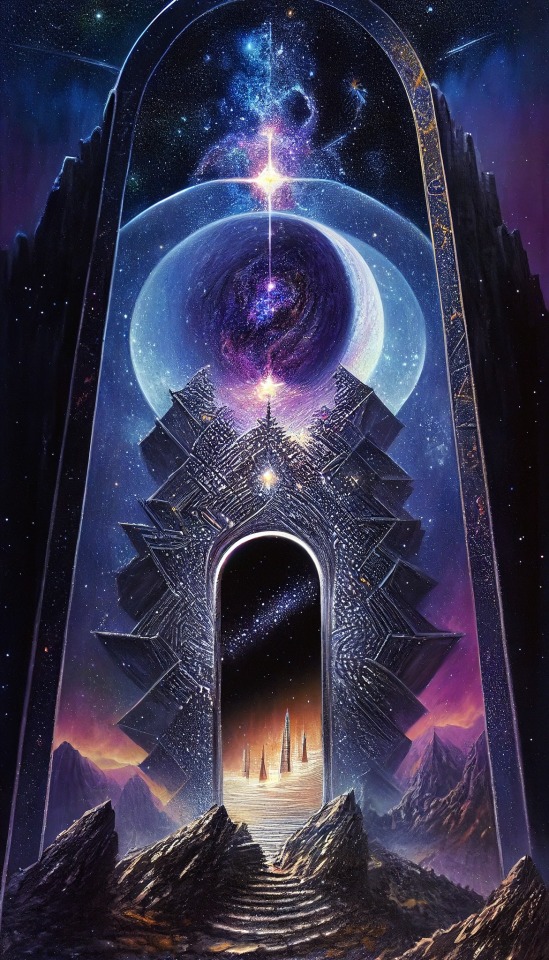
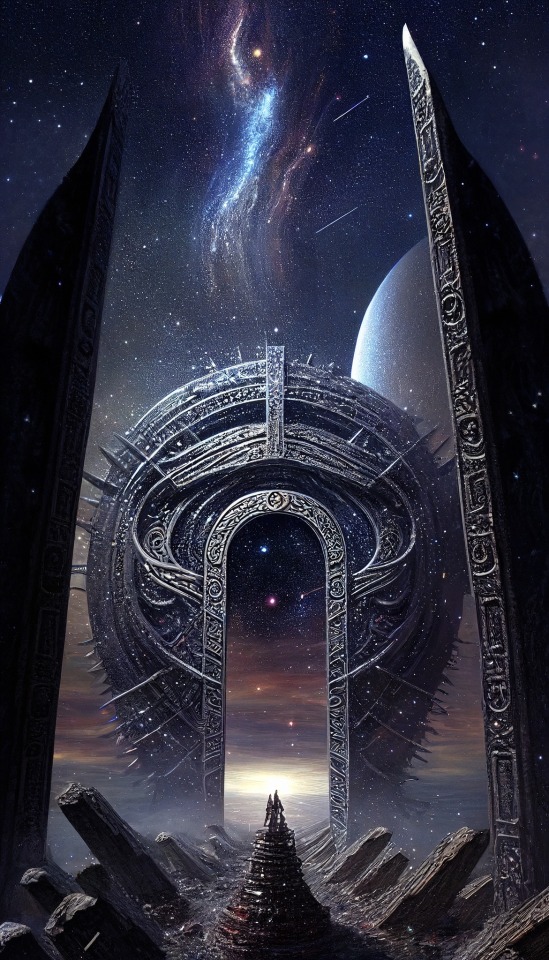
Anunnaki Of Nibiru (“those who from heaven came to earth” in Sumerian)
Anunnaki Star Gate Talon Abraxas Guardians of the Stargates Human beings are the guardians of earth. We are the guardians of the 12 primary stargates and 12 secondary stargates. Stargates offer interdimensional and multi-dimensional travel and humans carry the crystal keys that enable us to access the stargates. If humans were not here, the stargates would close permanently and no other beings would be able to visit or leave planet earth. The Earth was originally intended to be a living crystal library and a central hub for extra-terrestrials to explore our galaxy using the global stargate network. We are not an insignificant solar system in an insignificant part of the galaxy. Contrary to what many believe, Earth is an important world for millions of planets and countless extra-terrestrial species.
30 notes
·
View notes
Text
Made Marion Development Update, Feb 2024

Hello everyone, and happy belated Valentine's Day! Will took a moment of his time to make everyone a very special Valentine.

Darn it, Will.
The Writing Desk
I am moving into Will Chapter 2! These first couple months of Will route development have been challenged by some unavoidable IRL issues, but those are all cleared up now and I am devoting the rest of February and March fully to writing Will's route.
Chapter 1, as predicted, will be around 20,000 words. I still have one more Chapter 1 scene to finish, but it's a big action scene, and those tend to take me forever as I figure out all the logistics. I decided that rather than delaying the rest of the adventure, I'll slowly add to that action scene while writing Chapter 2.
Will Preview Video:
In case you missed it, we created a preview stream featuring the beginning of Will's route for the Steam Storyteller's Festival in early February. Here it is!
youtube
Art Roundup
Some backers have been curious as to the completion status of our art, so here's the roundup:
Sprites and CGs (Arrapso)
All main character sprites are complete, save for a ??? variant sprite that will only be seen in the DLC.
We have 3.5 major NPC sprites yet to be completed: Hugh, leader of the Grey Wolves (backer sprite); Issa, Lord Geoffrey's cousin in from Nibiru (backer sprite); Kafeel, leader of Nottingham's Sunjati Merchant association and Will's friend; and the final version of Thomas, a character who is only seen in Alanna's route. I will need Kafeel for Will's EA release and am hoping to have Hugh and Issa for it as well, although they are more important on the Nottingham side.
After those are complete, Arrapso's main job will be CGs. I have ordered 4/5 Will CGs and am still deciding on the design for the final one. We also still need to design the backer wallpapers (which will be available in PC and phone formats).
Backgrounds & Creature Sprites (Sandra)
Backgrounds are almost entirely finished. I have one more major background to commission and then it'll just be the occasional variation as needed or maaaaybe one or two more major backgrounds later on to add more variation to the Nottingham Town exteriors.
All major creature sprites are complete. I may commission one of Geoff's beloved hunting hounds during his route, but haven't decided yet. Meissa's bird friend will likely be a cut-in like our messenger doves.
Lore Intro and Cut-Ins (Lawrichai)
Lawri has been having some IRL challenges but should be back with us soon. Her main jobs right now are sexy silhouettes and the lore intro animation. We may be transforming the lore intro graphics into a full .webm animation instead of using Ren'py's built in Animation and Transition Language, as this might actually be easier for Lawri, as well as looking a lot smoother and making me pound my head against my desk less. It's a win/win/win! We'll have more on this next time.
Otherwise, Lawri's work is ongoing depending on budget and how much she is able to complete from route to route (I can always add in more cut-ins, but for now we're focusing on more critical ones as we have time after the sexy sils are complete per route).
So that's where we are with art right now! We're in pretty good shape overall, there just might need to be some more intense art production while I complete the second half of Will's script.
See you next month!
44 notes
·
View notes
Text

I restarted Anodyne 2 again, and it made me want to draw this
The beginning levels and music give me a very particular vibe, and I wanted to draw someone just cuddled in a big cozy blanket, away from all the troubles of the inevitable plot
Probably should have drawn Nova, the actual character from Anodyne 2 instead of injecting Evoland 2 into it, but eh, whatever
Tiny Ceres gets a blanket, because she needs some small amount of happiness and peace in her life
You know, I do wonder where Ceres went after we saw her in Grizzly Pass. We don’t hear anything of her backstory after this point up until she saves us after the Laboratory
An old idea of mine is that she ends up living in the future Nibiru Village, since it’s supposed to be far away from all the war and Finrod seems like the type of guy to take in a small child all alone, or at least give her some hot food and a blanket and let her stay. Also that she was the one who lived in the abandoned house in Nibiru Village, but I don’t know how plausible that is. But we also don’t know, and that house never gets a proper explanation (plus her leaving Kuro the Old Sword there would make some amount of sense I think), so maybe she could have
Anyways, I just want to also add on drawing process stuff, so you can read that here if you want
So I was trying to do that red sketch line thing I tried some months ago again, since I feel like it actually did work to some extent, I just couldn’t apply it to my normal brushes


And I did try to Marker Pen the lineart, but part of the issue was that I felt like the lines were too thick, and then that their solidness was taking away from the picture. Like, it was making it feel less…authentic? I’m not sure how to explain what I mean. But I realized the sketch was fine as is, so I just darkened it and colored from there
I actually do quite like how it turned out, I like the softness of it all
She’s supposed to be somewhere in Grizzly Pass, since that’s where we saw her
Where’d she get the blanket? I don’t know, but it was the idea to give her one, so shush
#take small Ceres#it took me a bit to find a good song for the vibes but Palisade’s theme ended up working perfectly#evoland 2#evoland ceres#my art
8 notes
·
View notes
Note
hey rox thoughts on those damn mind controlling aliens from planet nibiru coming here to take our jobs, or women and or gummy bears?
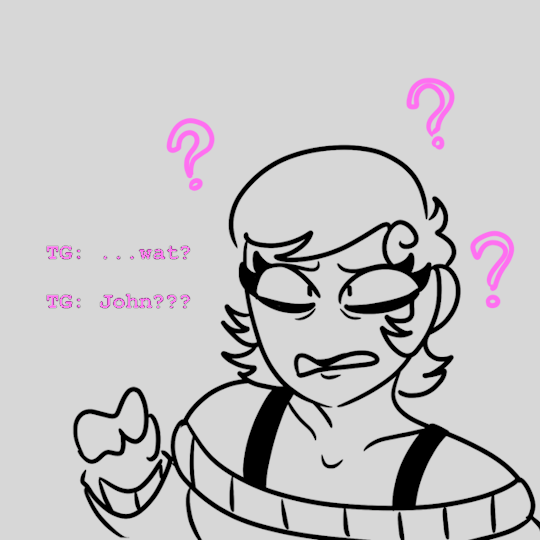
-> "What are your favorite things about Eri?"
25 notes
·
View notes